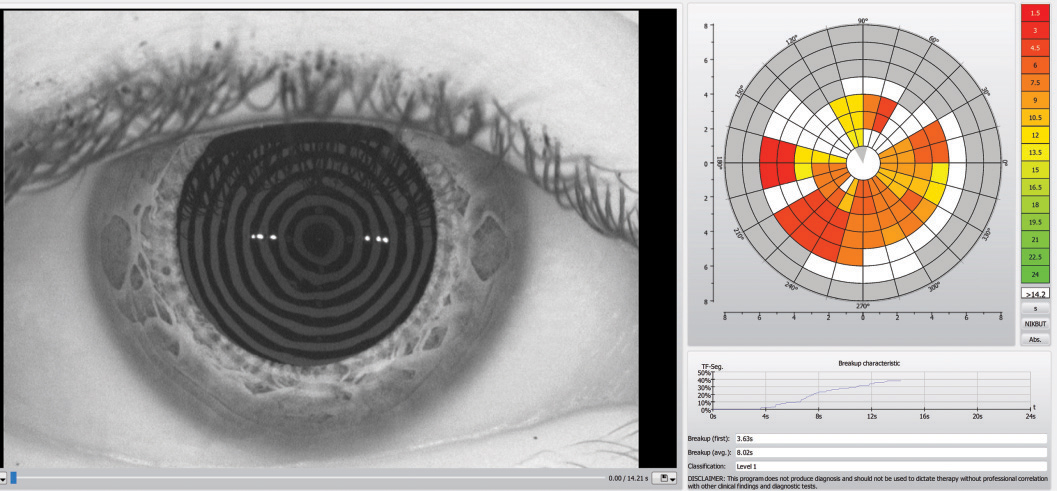 |
Patients with Sjögren’s DED were found to have a shorter tear film breakup time and. overall worse visual outcomes than those with DED from other causes. Photo: Kambiz Silani, OD. Click image to enlarge. |
One type of aqueous-deficient DED known to cause more severe symptoms and discomfort than other forms develops from Sjögren’s syndrome. Compared with those without the condition, patients with Sjögren’s DED have worse tear secretion, shorter tear film breakup time, more intensive corneal staining, more severe ocular surface inflammation, fewer corneal nerve fibers and lower epithelial cell density.
Researchers recently performed an analysis comparing patients with Sjögren’s DED to patients without in an effort to investigate the difference in location of the first tear film breakup point between the two cohorts as a possible indicator of Sjögren’s in patients with dry eye. They concluded that the location had unique characteristics in Sjögren’s DED patients, occurring more frequently at the inferior cornea.
The study enrolled 22 patients with Sjögren’s DED and 22 without. Various tear film measurements were taken and compared between the groups, including the first tear film breakup point, tear meniscus height, meibomian gland dropout, ocular surface disease index (OSDI), Schirmer I test, fluorescein breakup time and corneal staining.
The analysis found that the first tear film breakup point occurred at the following quadrants among the cohort: supranasal in 13% of eyes, supratemporal in 9%, inferonasal in 39% and inferotemporal in 39%. Occurrence in the inferior quadrants was much more common in Sjögren’s DED patients than in those without (86.3% vs 68.1%). The first tear film breakup point occurred in the superior cornea in 13.6% of Sjögren’s patients and 31.8% of those without.
In patients with Sjögren’s, the researchers also found that a “temporal breakup point was seen more often in those who presented corneal fluorescein staining in any location, while a nasal breakup point was more frequent in those who did not present any corneal fluorescein staining.”
The researchers noted that consistent with prior studies, Sjögren’s DED patients had higher OSDI values, less tear production, a more unstable tear film, more severe corneal staining and a higher rate of meibomian gland dropout.
“Our previous study showed that Sjögren’s DED patients had worse visual quality. The current study confirmed that tear film instability and ocular surface damage might be possible reasons,” they concluded.
Zhao S, Le Q. Analysis of the first tear film break-up point in Sjögren’s syndrome and non-Sjögren’s syndrome dry eye patients. BMC Ophthalmol. January 3, 2022. [Epub ahead of print]. |

